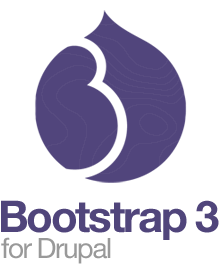Drupal
 Drupal is a free and open-source content management system or CMS. A CMS is a software tool that allows users to add, publish, edit or remove content from a website using a web browser rather than working directly on a web server where files and content are stored in a database. Examples of CMS software include WordPress and Joomla!.
Drupal is a free and open-source content management system or CMS. A CMS is a software tool that allows users to add, publish, edit or remove content from a website using a web browser rather than working directly on a web server where files and content are stored in a database. Examples of CMS software include WordPress and Joomla!.
Drupal provides the back-end frameworks for nearly 1 out of every 5 of the top 10,000 websites worldwide. It is used by governments, schools, media companies, businesses, and non-profit organizations across the globe.
Because of its open-source community, which Skvare is a part of, Drupal is easily expanded and integrates with many third-party tools, including CiviCRM. The open-source community also is quick to respond to threats with updates keeping Drupal secure for all users. And, because it is open-source, there are no subscription fees to own a Drupal website. The only ongoing costs can be hosting and maintenance.
Modules
![]() What allows a Drupal website to add functionality and features are modules. While Drupal core manages the content, modules can add applications and distinct content types to a website as well as varying ways to display content.
What allows a Drupal website to add functionality and features are modules. While Drupal core manages the content, modules can add applications and distinct content types to a website as well as varying ways to display content.
Popular modules which help extend Drupal include Webform, Calendar, and CAPTCHA modules. Paragraphs and Layout Builder are two modules that make it easy to design website pages without coding. Ubercart and Drupal Commerce can be used for e-commerce.
As of early 2022, there were more than 40,000 modules available for Drupal, including modules created by Skvare developers to meet clients’ specific needs.
Themes
A theme adds aesthetics to the website and handles how files and data are presented. Themes typically consist of standard web assets such as CSS and JavaScript. A theme manages the overall look and feel of the website including color palettes, typography, headers and footers, and backgrounds. In early 2022, there were nearly 3,000 themes available for Drupal.
Websites also can utilize a sub-theme, which inherits the parent’s theme resources. Another option is a custom-built theme; however, a custom theme will have to be maintained by the site owner where contributed themes typically get regular updates from the open-source community.

Theming
Theming is the process of creating a website’s unique look and feel. This may include the website's primary colors and fonts, menus, styles to manage how photos are displayed, and headers and footers including slogans, logos, and favicon. Theming includes designating in which regions specific content will be displayed. This is typically controlled through blocks, a part of the theme that can be used to divide the display into sections. An example of this is a sidebar.
While theming and design share common features, theming sets the base characteristics of a website. Themes can and sometimes are used without additional design. Drupal websites also often use two themes — a front-end theme displayed to end-users and an administrative theme displayed to admins and edits.
Theming is typically done as part of a new website build but also may be modified later as part of a design phase.
Design
Web design is the process of planning, conceptualizing, and arranging content online. Design goes beyond aesthetics to include how the user will interact with the website. Web design may use standard web assets such as HTML and CSS. It also can impact the site's SEO — Search Engine Optimization — and Accessibility.
A web designer works on the appearance, layout, and, in some cases, content of a website. Appearance, for instance, relates to the colors, font, and images used. Layout refers to how information is structured and categorized. A good web design is easy to use, aesthetically pleasing and suits the user group and brand of the website.
Design goes beyond theming in that it is concerned with not just how elements look and feel across the entire website but with specific features and pages. While the theme will set headline fonts, the design will indicate where headlines are displayed and, in some cases, may use different fonts and styles for different pages. A design also may create additional font styles such as a subhead for use in specific areas.
While web design shares common practices with graphic design, the two should not be thought of as interchangeable. Web design takes into account the dynamic natures of websites along with how users will interact with and navigate various features.
At Skvare, we work with each of our clients to help them fully understand the capabilities of their software so they can expect more from their mission-critical systems. We'd love to talk with you about your next technology project.